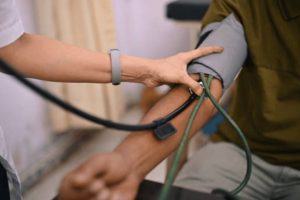Content Attributes
The new Coronavirus SARS-CoV-2 is a respiratory virus belonging to the large coronavirus family (CoV); these can be responsible for various pathologies of varying magnitude: from the common cold to more serious respiratory syndromes such as MERS ( Middle East respiratory syndrome , Middle East respiratory syndrome ) and SARS (severe acute respiratory syndrome , Severe acute respiratory syndrome ).
The name is due to the presence of crown-shaped tips on the surface of the virus. Coronaviruses are common in animal species such as bats and camels, but they can evolve and infect humans ; this ability of viruses present in the animal world to become pathogenic to humans is called “species jump” or spillover . To date we know seven types of human coronavirus, the first were identified in the mid-seventies, while the last are more recent (SARS-CoV, 2002; MERS-CoV, 2012), up to the new SARS-CoV-2 coronavirus of these past months. We talk about it with dr. Michele Lagioia , Medical Director of Humanitas.
Why do we talk about new coronavirus?
This strain of coronavirus is in all respects “new” in that it has never been previously identified in humans . In particular, SARS-CoV-2 had never been identified before its report in China, in the city of Wuhan, in December 2019.
The virus was named after the Coronavirus study group of the International Committee on Taxonomy of Viruses (the commission responsible for classifying and naming viruses) because it was considered the “brother” of the virus responsible for SARS (SARS-CoV).
COVID-19 is the name of the new coronavirus disease: “CO” indicates crown, “VI” virus, “D” means disease (disease in English) and 19 refers to 2019, the year of its appearance.
Is the new Coronavirus dangerous?
According to the World Health Organization, about 80% of infected people recover without the need for special care ; in about one in six people the disease is serious and causes breathing difficulties, while at the moment the mortality rate is around 2% . Older people and patients with pre-existing diseases, especially diabetes and heart disease, are more susceptible to severe forms of COVID-19.
The symptoms of the new Coronavirus and the diagnosis
New coronavirus infection can occur with mild symptoms such as a cold , sore throat , cough and fever , or with more serious symptoms such as pneumonia and breathing difficulties . In some subjects, then, the presence of the virus is not accompanied by symptoms or a condition of malaise.
Given the similarity of the symptoms related to new coronavirus infection with those of seasonal flu, to confirm the diagnosis of COVID-19. t is necessary to subject the patient to specific laboratory tests . The diagnosis is performed in the regional reference laboratories following the “Real Time PCR” protocols for SARS-CoV-2 established by the World Health Organization.
The patient is subjected to a pharyngeal swab : a rapid, non-invasive and painless examination that involves taking a sample of the secretion at the level of the throat (in particular on the mucous membrane of the posterior pharynx) using a cotton swab that is inserted into the mouth . The sample is then stored according to specific criteria and analyzed in the laboratory in order to check for the presence of the virus.
How is COVID-19 treated?
We do not yet have specific disease therapy . Treatment is based on the patient’s symptoms taking into account the overall clinical picture.
What to do in case of doubts?
Where breathing difficulties, coughs and fever are felt, it is good to:
- do not go to the emergency room or to the family doctor;
- wear a mask to protect people around;
- call the toll-free number 1500, active 24 hours a day, made available by the Ministry of Health, for more information on the behaviors to follow.



